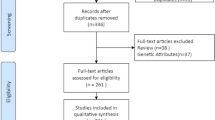Abstract
The effect of Type 2 Diabetes (T2D) on brain health is poorly understood. This study aims to quantify the association between T2D and perfusion in the brain. T2D is a very common metabolic disorder that can cause long term damage to the renal and cardiovascular systems. Previous research has discovered the shape, volume and white matter microstructures in the brain to be significantly impacted by T2D. We propose a fully-connected deep neural network to classify the regional Cerebral Blood Flow into low or high levels, given 16 clinical measures as predictors. The clinical measures include diabetes, renal, cardiovascular and demographics measures. Our model enables us to discover any nonlinear association which might exist between the input features and target. Moreover, our end-to-end architecture automatically learns the most relevant features and combines them without the need for applying a feature selection method. We achieved promising classification performance. Furthermore, in comparison with six (6) classical machine learning algorithms and six (6) alternative deep neural networks similarly tuned for the task, our proposed model outperformed all of them.
Access this chapter
Tax calculation will be finalised at checkout
Purchases are for personal use only
Similar content being viewed by others
References
Ashburner, J.: A fast diffeomorphic image registration algorithm. Neuroimage 38(1), 95–113 (2007)
CDC: Estimates of diabetes and its burden in the united states. National diabetes statistics report (2014)
Freedman, B.I., Divers, J., Whitlow, C.T., Bowden, D.W., Palmer, N.D., et al.: Subclinical atherosclerosis is inversely associated with gray matter volume in African Americans with type 2 diabetes. Diab. Care 38(11), 2158–2165 (2015)
Hsu, J.L., Chen, Y.L., Leu, J.G., Jaw, F.S., Lee, C.H., Tsai, Y.F., Hsu, C.Y., Bai, C.H., Leemans, A.: Microstructural white matter abnormalities in type 2 diabetes mellitus: a diffusion tensor imaging study. NeuroImage 59(2), 1098–1105 (2012)
Kingma, D., Ba, J.: Adam: a method for stochastic optimization. arXiv preprint arXiv:1412.6980 (2014)
Krizhevsky, A., Sutskever, I., Hinton, G.E.: Imagenet classification with deep convolutional neural networks. In: NIPS (2012)
Maldjian, J.A., Laurienti, P.J., Kraft, R.A., Burdette, J.H.: An automated method for neuroanatomic and cytoarchitectonic atlas-based interrogation of FMRI data sets. Neuroimage 19(3), 1233–1239 (2003)
Malenka, R.C., Nestler, E., Hyman, S., Sydor, A., Brown, R., et al.: Molecular Neuropharmacology: A Foundation for Clinical Neuroscience. McGrawHill Medical, New York (2009)
Murea, M., Hsu, F.C., Cox, A.J., Hugenschmidt, C.E., Xu, J., Adams, J.N., et al.: Structural and functional assessment of the brain in European Americans with mild-to-moderate kidney disease: diabetes heart study-mind. Nephrol. Dial. Transplant. 30(8), 1322–1329 (2015)
Peng, B., Chen, Z., Ma, L., Dai, Y.: Cerebral alterations of type 2 diabetes mellitus on MRI: a pilot study. Neurosci. Lett. 606, 100–105 (2015)
Raffield, L.M., Cox, A.J., Freedman, B.I., Hugenschmidt, C.E., Hsu, F.C., et al.: Analysis of the relationships between type 2 diabetes status, glycemic control, and neuroimaging measures in the diabetes heart study mind. Acta Diabetologica 53(3), 439–447 (2016)
Rofey, D.L., Arslanian, S.A., El Nokali, N.E., Verstynen, T., Watt, J.C., Black, J.J., et al.: Brain volume and white matter in youth with type 2 diabetes compared to obese and normal weight, non-diabetic peers: a pilot study. Int. J. Dev. Neurosci. 46, 88–91 (2015)
Simonyan, K., Zisserman, A.: Very deep convolutional networks for large-scale image recognition. In: ICLR (2015)
Sink, K.M., Divers, J., Whitlow, C.T., Palmer, N.D., Smith, S.C., Xu, J., et al.: Cerebral structural changes in diabetic kidney disease: African American-diabetes heart study mind. Diab. Care 38(2), 206–212 (2015)
Tzourio-Mazoyer, N., Landeau, B., Papathanassiou, D., Crivello, F., Etard, O., et al.: Automated anatomical labeling of activations in SPM using a macroscopic anatomical parcellation of the MNI MRI single-subject brain. Neuroimage 15(1), 273–289 (2002)
Yager, L., Garcia, A., Wunsch, A., Ferguson, S.: The ins and outs of the striatum: role in drug addiction. Neuroscience 301, 529–541 (2015)
Zhang, T., Shaw, M., Humphries, J., Sachdev, P., Anstey, K.J., Cherbuin, N.: Higher fasting plasma glucose is associated with striatal and hippocampal shape differences: the 2sweet project. BMJ Open Diab. Res. Care 4(1), 1–8 (2016)
Author information
Authors and Affiliations
Editor information
Editors and Affiliations
Rights and permissions
Copyright information
© 2017 Springer International Publishing AG
About this paper
Cite this paper
Saghafi, B. et al. (2017). Quantifying the Impact of Type 2 Diabetes on Brain Perfusion Using Deep Neural Networks. In: Cardoso, M., et al. Deep Learning in Medical Image Analysis and Multimodal Learning for Clinical Decision Support . DLMIA ML-CDS 2017 2017. Lecture Notes in Computer Science(), vol 10553. Springer, Cham. https://doi.org/10.1007/978-3-319-67558-9_18
Download citation
DOI: https://doi.org/10.1007/978-3-319-67558-9_18
Published:
Publisher Name: Springer, Cham
Print ISBN: 978-3-319-67557-2
Online ISBN: 978-3-319-67558-9
eBook Packages: Computer ScienceComputer Science (R0)




